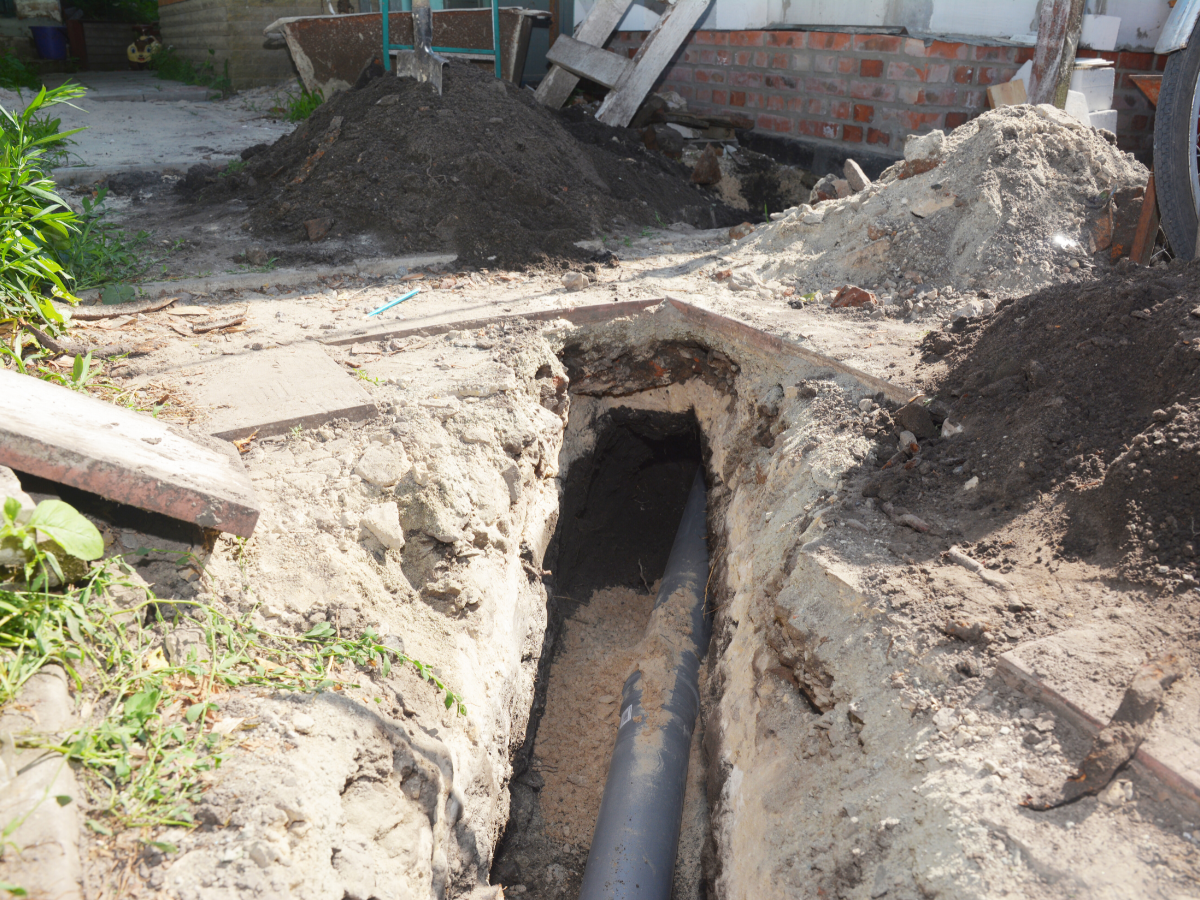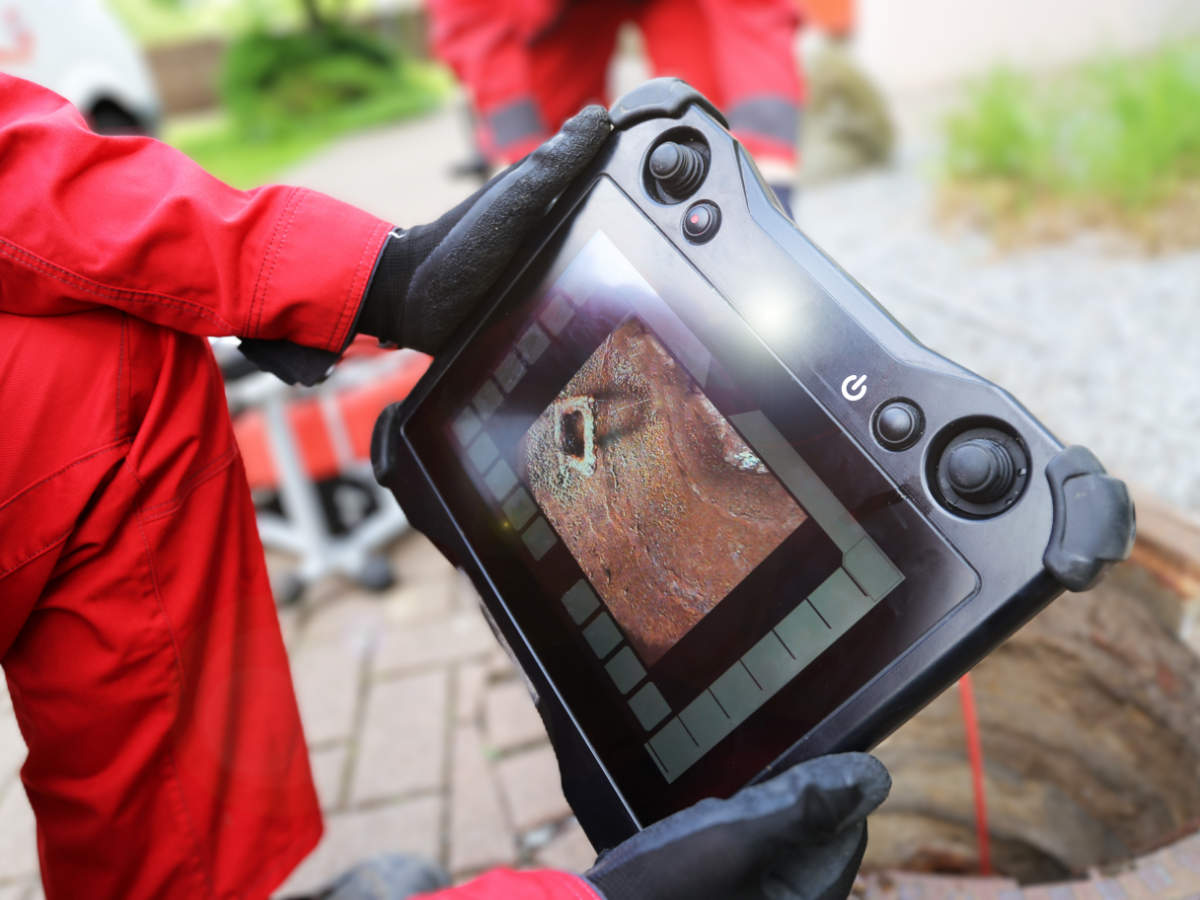 A damaged sewer line is something that no homeowner in Bradenton wants to deal with, but it can happen in both newer and older homes. The most common causes of sewer line damage include blockages, tree root intrusion, aging pipes, corrosion and shifting soil. Recognizing these issues early can help you prevent costly repairs.
A damaged sewer line is something that no homeowner in Bradenton wants to deal with, but it can happen in both newer and older homes. The most common causes of sewer line damage include blockages, tree root intrusion, aging pipes, corrosion and shifting soil. Recognizing these issues early can help you prevent costly repairs.
What Is a Sewer Line, and Why Does It Fail?
Your home’s sewer line carries wastewater away from your home in an efficient and sanitary manner. Older sewer pipes are made with cast iron or clay. Orangeburg pipe is also found in older systems, and it is made with a combination of tar and wood fiber.
Modern sewer lines have PVC pipes. Both clay and Orangeburg pipes last for approximately 50 to 60 years. Cast iron pipes can be useful for up to 75 years. PVC pipes perform well for more than 100 years.
However, sewer lines can be damaged well before the pipe material fails. Several factors related to the soil and environmental conditions as well as the items that pass through the pipes can damage sewer lines.
Top Causes of Sewer Line Damage
Understanding the top causes of sewer line damage can help you prevent damage and the related stress and expense caused by a messy situation.
1. Blockages and Clogs
Your sewer line is designed to carry liquid wastewater. Things like food waste, hygiene products, baby wipes and more clog the line. Even grease and globs made out of hair, soap residue and more can create a clog.
Clogs can cause sewer waste to back up into your home and create a stinky and unsanitary situation. More than that, clogs create pressure inside the pipe, and this pressure can result in weakened pipes. Blockages from grease, wipes, and debris are the #1 preventable cause of sewer line damage.
2. Tree Root Intrusion
Tree roots search for nutrients and moisture as they grow. They often find small cracks in the pipes and joints. As they grow into these spaces, they can cause partial and complete blockages.
They might also cause the sewer line to rupture. If roots are growing into your sewer line, you might see lusher green patches in one area of the yard. Sinkholes and areas that are moist for no reason are also signs.
Inside the home, you might hear gurgling water, smell sewage or have slow-draining pipes. One of the best steps to take to avoid this potential issue is to know where your sewer line is and avoid planting vegetation within several feet of the pipe.
3. Pipe Corrosion and Deterioration
Some materials, such as clay, cast iron and Orangeburg pipes, are more susceptible to damage from moisture. Things like soil acidity, the chemistry of the water and even scaling can be problematic.
One weak or damaged area of the pipe caused by corrosion or deterioration often means that other parts are developing issues. In these situations, it is often better to replace the entire pipe rather than continue making repairs as different areas of the pipe fail.
4. Ground Movement and Soil Shifts
The integrity of the sewer line is based on the supporting soil around it. The ground naturally shifts and moves due to weather conditions and natural soil settling. Periods of heavy rain as well as alternating periods of very dry and very wet conditions are problematic for soil stability.
Heavy construction equipment and traffic above ground can cause the soil below to shift as well. As the soil shifts, pressure is placed on the sewer line. This results in poor alignment and then cracks or even a complete collapse.
5. Poor Installation or Old Materials
PVC pipes and joints are commonly used today because they are far more durable than older legacy pipe materials. In addition, installation processes have dramatically improved over the years.
Poor installation, such as improper sloping, can weaken and damage the sewer line. If you live in an older home, it’s important to know what your pipes are made out of and to schedule an inspection annually. It’s far less stressful to be proactive than to deal with a major plumbing emergency.
Warning Signs of Sewer Line Damage
While your sewer line is buried several feet underground, there are often warning signs of damage well before the pipe completely fails.
These are the signs to look for:
- Sewer odors in home or yard
- Multiple slow drains or gurgling toilets
- Water pooling or lush patches in lawn
- Foundation cracks or sinkholes
How Plumbers Diagnose Sewer Line Damage
 If damage to your sewer line is suspected, your plumber has several options available to diagnose and pinpoint the location of the damage.
If damage to your sewer line is suspected, your plumber has several options available to diagnose and pinpoint the location of the damage.
These are:
- Video camera inspections (CCTV sewer scope)
- Smoke or dye testing
- Hydrostatic pressure testing
- Locating the exact break for targeted repair
Sewer Line Repair and Replacement Options
There are several repair and replacement options for damaged sewer lines. The traditional process of excavation involves digging a trench to physically access the pipe.
Pipelining and bursting are trenchless methods. With pipe lining, the existing pipe is reinforced with a lining that runs through its interior. With pipe bursting, a new pipe is installed at the same time the old pipe is removed.
Physical excavation is time-consuming and damaging to your landscaping. Trenchless pipe repair is a faster process, and it is often more affordable that excavation repairs.
How to Prevent Sewer Line Damage
While sewer line damage results in expensive repairs, a major disruption to home life and potentially additional property damage, it can be prevented.
These are essential steps to minimize the risk of dealing with a damaged sewer line:
- Regular inspections and cleanings
- Avoid flushing wipes, grease, and debris
- Strategic landscaping (keep trees away)
- Upgrade failing or outdated pipe materials
Frequently Asked Questions (FAQ)
What is the most common cause of sewer line damage?
Clogs and blockages are the most common cause of sewer line damage. The good news is that they are completely preventable.
Does homeowners’ insurance cover sewer line repairs?
Sewer line repairs may be covered by homeowners’ insurance in some cases. The cause of the damage must be something that is included in the coverage.
Can tree roots be permanently removed from pipes?
Tree roots can be removed from pipes. However, tree roots will continue growing as long as the tree is alive. This means that future root intrusion is possible.
How often should I have my sewer line inspected?
For a newer home, schedule a sewer line inspection every three to five years. For an older home, schedule an inspection every one to two years.
What’s the lifespan of modern PVC sewer pipes?
The lifespan of modern PVC sewer pipes is more than 100 years.
Schedule Service for Your Home Today
 Sewer line damage is commonly caused by blockages, tree root intrusion, aging pipes, corrosion and shifting soil. Understanding these causes will help you prevent some of these issues from happening in your home. Early detection through a sewer line inspection is essential to monitor the condition of your line and take preventative measures as necessary.
Sewer line damage is commonly caused by blockages, tree root intrusion, aging pipes, corrosion and shifting soil. Understanding these causes will help you prevent some of these issues from happening in your home. Early detection through a sewer line inspection is essential to monitor the condition of your line and take preventative measures as necessary.
At Bradenton Benjamin Franklin, our punctual plumbers offer sewer line repair and replacement services for Bradenton, FL and surrounding areas. Schedule service with us today.